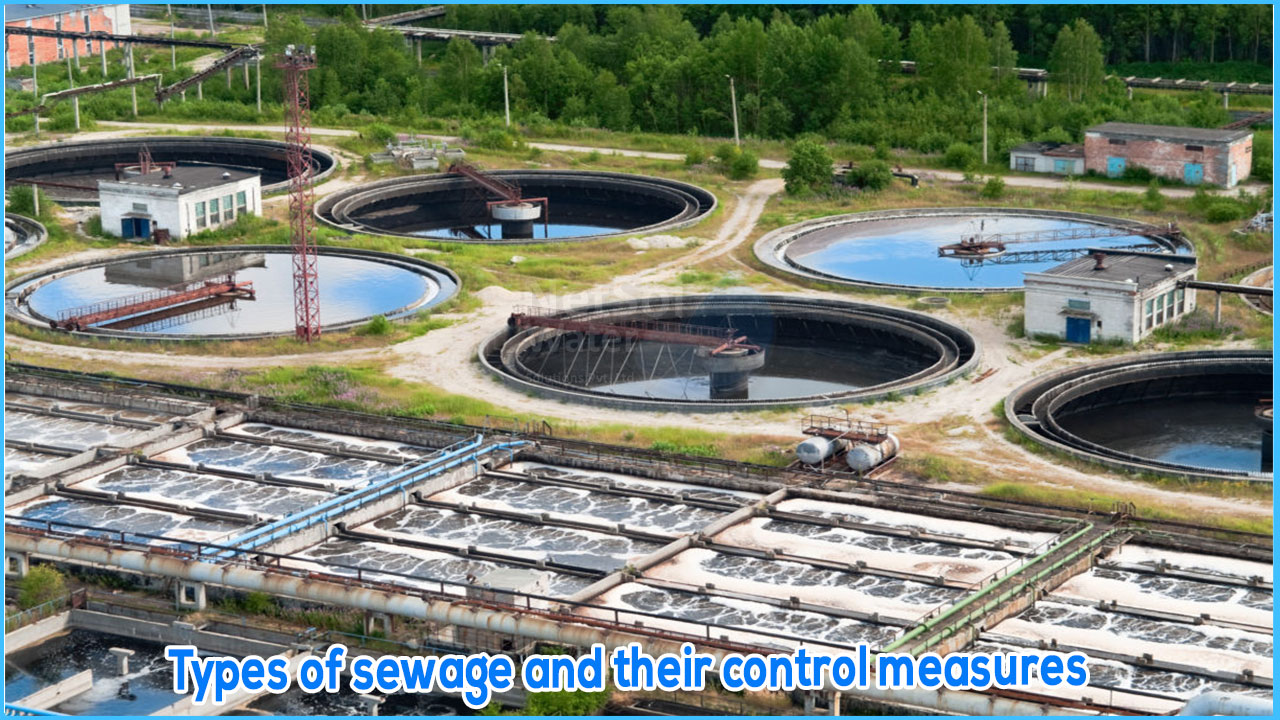Domestic sewage, industrial sewage, and storm sewage are the three types of wastewater or sewage. Domestic sewage, also known as sanitary sewage, transports used water from homes and flats. Water from manufacturing or chemical operations is used in industrial sewage. Storm sewage, often known as storm water, is rainwater collected in a system of pipelines or open channels.
By weight, domestic sewage is slightly more than 99.9% water. The remaining impurities, which account for less than 0.1 percent of the total, include a wide range of dissolved and suspended contaminants. The nature of these contaminants and the huge quantities of sewage in which they are carried make disposal of residential wastewater a considerable technological difficulty, despite the fact that they make up a very small fraction of the sewage by weight. Putrescible organic debris and plant nutrients are the main pollutants, but disease-causing microorganisms are also extremely likely to be found in home sewage. Depending on the nature of the industrial process, industrial effluent frequently comprises particular and easily recognizable chemical components. Organic materials, suspended and dissolved particles, and other substances are picked up by storm sewage as it passes over the ground.
PRINCIPAL POLLUTANTS
1 Organic material
The biochemical oxygen demand, or BOD, indicates the amount of putrescible organic material in sewage; the more organic material in the sewage, the greater the BOD, which is the amount of oxygen required by microbes to degrade the organic substances in sewage. It's one of the most significant factors to consider while designing and operating sewage treatment plants. BOD levels in industrial sewage can be many times higher than in home sewage. When storm sewage is mixed with household sewage in combined sewerage systems, the BOD of storm sewage is of special significance.
2 Suspended Solids
Suspended particles are another essential feature of sewage. The amount of sludge produced in a treatment facility is proportional to the amount of total suspended particles in the sewage. Industrial and storm sewage may have higher suspended particles concentrations than home sewage. The effectiveness of the treatment process is determined by how successfully a treatment plant eliminates suspended particles and BOD.
3 Plant nutrients
Domestic sewage contains nitrogen and phosphorus molecules, which are two key nutrients required for plant growth. Excessive nitrates and phosphates in lakes can promote the rapid growth of algae. Eutrophication is a process that accelerates the natural ageing of lakes caused by algal blooms, which are frequently triggered by sewage discharges.
4 Microbes
Per gallon of sewage, there are millions of germs. The majority are coliform bacteria from the human intestine, although other germs are also likely to be present in home sewage. Coliforms are utilized as sewage contamination indicators. A high coliform level usually implies that sewage pollution has occurred recently.
HOW SEWAGE CAN BE CONTROLLED?
One can use these alternative methods to control sewage disposal.
1 SEPTIC TANKS
Low-cost septic tanks, also known as onsite disposal systems, are recommended to handle waste in semi-urban regions. Household wastewater is permitted to run into an underground septic tank with this manner. The sludge settles to the bottom of the tank, while the lighter waste floats to the top.Bacteria in the sewage aid in the partial decomposition of solid waste. The liquid waste is then allowed to run through pipes out of the tank and into the ground, where it mixes with the soil below.
2 BIOGAS PLANTS
The installation of biogas plants is another way of waste disposal that is popular in India's villages and small towns. Human and animal excreta enter into biogas plants via covered drains in this manner. Biogas is produced when microorganisms break down the elements in trash. This biogas is subsequently converted into energy.
3 VERMI-COMPOSTING TOILETS
In India, vermi-composting toilets have recently been developed as an alternative form of waste disposal. It is built on a unique concept that employs earthworms to turn human waste into compost. It uses very little water and is a safe and sanitary method of disposing of human waste.




